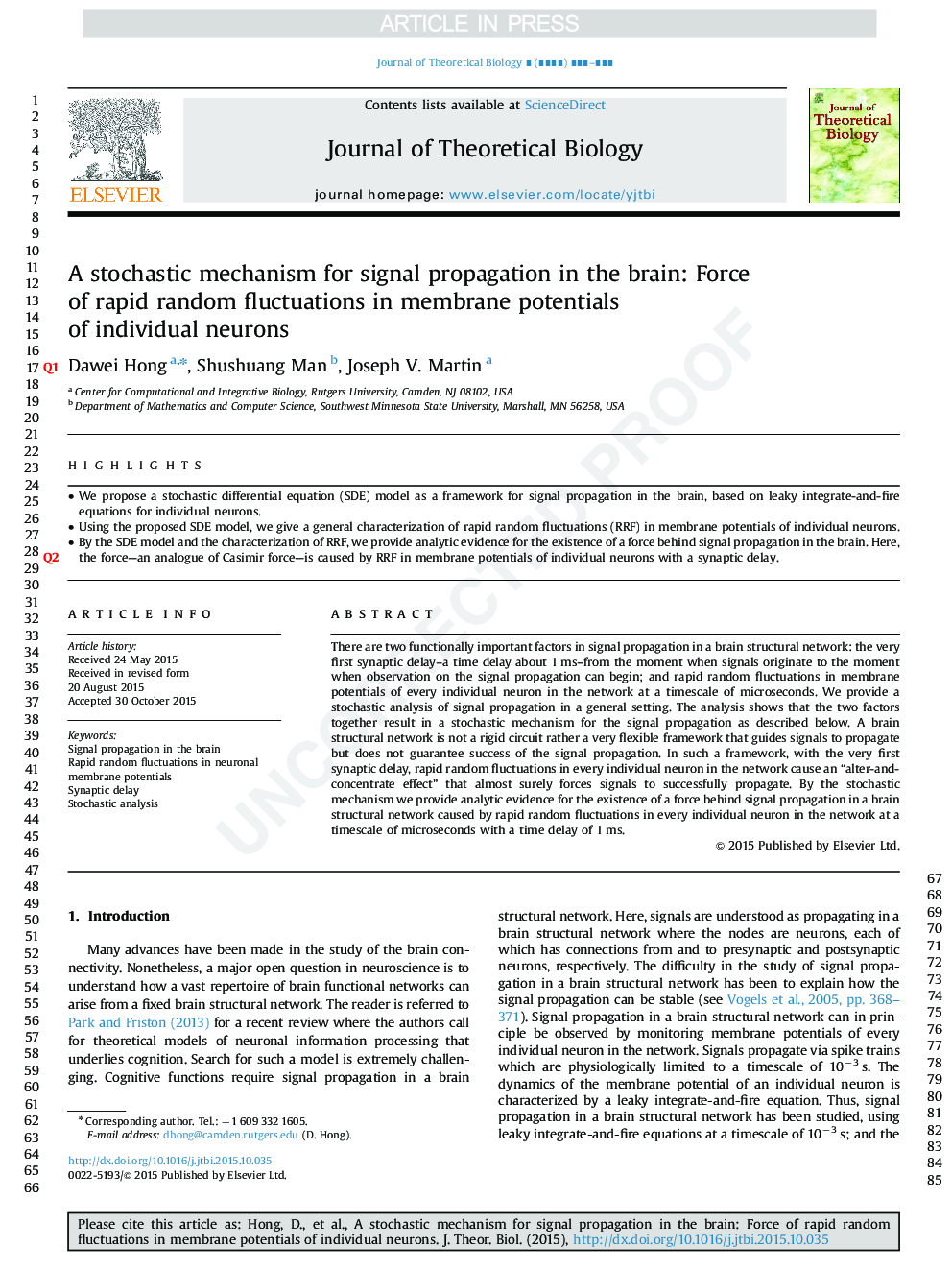| Article ID | Journal | Published Year | Pages | File Type |
|---|---|---|---|---|
| 6369387 | Journal of Theoretical Biology | 2016 | 12 Pages |
Abstract
There are two functionally important factors in signal propagation in a brain structural network: the very first synaptic delay-a time delay about 1Â ms-from the moment when signals originate to the moment when observation on the signal propagation can begin; and rapid random fluctuations in membrane potentials of every individual neuron in the network at a timescale of microseconds. We provide a stochastic analysis of signal propagation in a general setting. The analysis shows that the two factors together result in a stochastic mechanism for the signal propagation as described below. A brain structural network is not a rigid circuit rather a very flexible framework that guides signals to propagate but does not guarantee success of the signal propagation. In such a framework, with the very first synaptic delay, rapid random fluctuations in every individual neuron in the network cause an “alter-and-concentrate effect” that almost surely forces signals to successfully propagate. By the stochastic mechanism we provide analytic evidence for the existence of a force behind signal propagation in a brain structural network caused by rapid random fluctuations in every individual neuron in the network at a timescale of microseconds with a time delay of 1Â ms.
Keywords
Related Topics
Life Sciences
Agricultural and Biological Sciences
Agricultural and Biological Sciences (General)
Authors
Dawei Hong, Shushuang Man, Joseph V. Martin,
